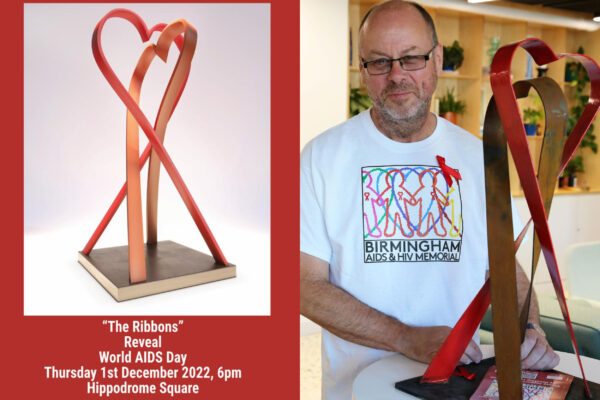Almost two years after the idea was first conceived by artist Garry Jones, alongside Phil Oldershaw and Andrew King, Birmingham’s AIDS & HIV Memorial is due to be unveiled on World AIDS Day – Thursday, December 1 – at Hippodrome Square from 6pm.
The five-tonne, six-metre tall sculpture, which depicts two interlocking heart ribbons, was designed by Garry Jones and created by Luke Perry at his steel foundry. The sculpture is not the only part of this memorial project with a quilt also having been created with 40 panels to mark the 40 years since the first diagnosis in 1981, and each panel represents a part of history across those years, both in Birmingham and wider, nationally and internationally.

This community art project, which was funded by the Arts Council, saw people from across the community – including groups, universities, hospitals, scouts, LGBTQ+ people – come together in workshops to share ideas. What’s more, three panels included in the quilt are in remembrance of lives lost to AIDS / HIV. Once the panels had been created, the quilt itself was then finished by volunteer sewing group Sew Marvellous, who stitched together all of the panels ready for its use during the unveiling of the memorial.
The quilt will be used as part of a procession on Thursday, December 1 and then it will surround the memorial. Following the unveiling of the AIDS & HIV Memorial, the cover-up quilt will be a stand-alone art piece that will be used and exhibited in public places such as colleges and art galleries.
Today, a HIV positive person on effective anti-retroviral treatment can simply take one pill a day and live a normal, healthy life. Plus, once the virus becomes undetectable, it is untransmittable and can no longer be passed on – U=U.
“The memorial will commemorate those we have lost but who will never be forgotten,” explains Garry Jones. “It will also be a symbol of hope for the future, at the heart of our city and for all to see. It will show how far we have come, but remind us how far we still have to go to end stigma and discrimination.”

















You must be logged in to post a comment.